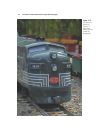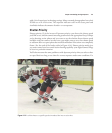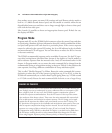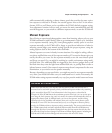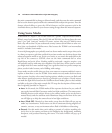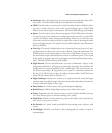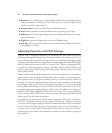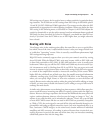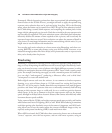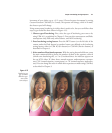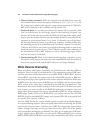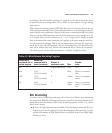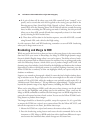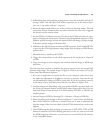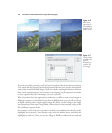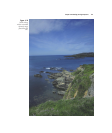
Fortunately, Nikon’s electronics geniuses have done an exceptional job minimizing noise
from all causes in the D7000. Even so, you might still want to apply the optional long
exposure noise reduction that can be activated using Long Exp. NR in the Shooting
menu, where the feature can be turned On or Off. This type of noise reduction involves
the D7000 taking a second, blank exposure, and comparing the random pixels in that
image with the photograph you just took. Pixels that coincide in the two represent noise
and can safely be suppressed. This noise reduction system, called dark frame subtraction,
effectively doubles the amount of time required to take a picture, and is used only for
exposures longer than one second. Noise reduction can reduce the amount of detail in
your picture, as some image information may be removed along with the noise. So, you
might want to use this feature with moderation.
You can also apply noise reduction to a lesser extent using Photoshop, and when con-
verting RAW files to some other format, using your favorite RAW converter, or an
industrial-strength product like Noise Ninja (www.picturecode.com) to wipe out noise
after you’ve already taken the picture.
Bracketing
Bracketing is a method for shooting several consecutive exposures using different set-
tings, as a way of improving the odds that one will be exactly right. Alternatively, brack-
eting can be used to create a series of photos with slightly different exposures (or white
balances) in anticipation that one of the exposures will be “better” from a creative stand-
point. For example, bracketing can supply you with a normal exposure of a backlit sub-
ject, one that’s “underexposed,” producing a silhouette effect, and a third that’s
“overexposed” to create still another look.
Before digital cameras took over the universe, it was common to bracket exposures,
shooting, say, a series of three photos at 1/125th second, but varying the f/stop from
f/8 to f/11 to f/16. In practice, smaller than whole-stop increments were used for greater
precision, and lenses with apertures that were set manually commonly had half-stop
detents on their aperture rings, or could easily be set to a mid-way position between
whole f/stops. It was just as common to keep the same aperture and vary the shutter
speed, although in the days before electronic shutters, film cameras often had only whole
increment shutter speeds available.
Today, cameras like the D7000 can bracket exposures much more precisely, and bracket
white balance and Active D-Lighting (ADL) as well. While WB bracketing is sometimes
used when getting color absolutely correct in the camera is important, and ADL brack-
eting allows you to have the camera adjust the contrast of difficult images as they are
exposed, autoexposure bracketing (AEB) is used much more often.
When AEB is activated, the D7000 takes three consecutive photos: one at the metered
“correct” exposure, one with less exposure, and one with more exposure, using an
David Busch’s Nikon D7000 Guide to Digital SLR Photography120



